Map of Southeast Asia
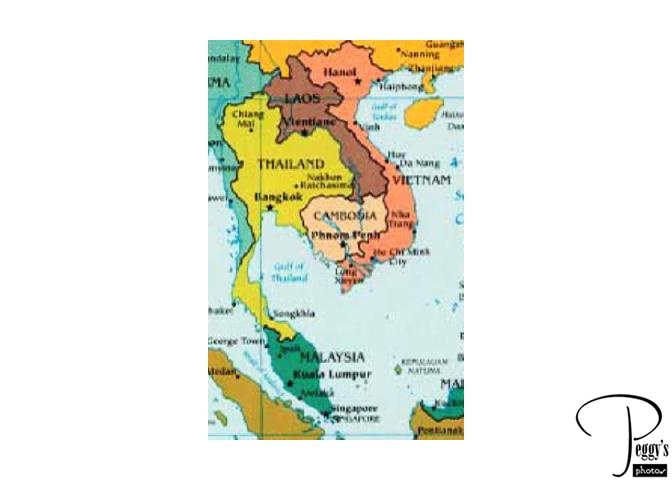
Day 1: I left my hotel in Kuala Lumpur early this morning to take a flight to Singapore on Malaysian Airlines. I had flown here on miles, with my end destination being Phnom Pehn, Cambodia, with a stopover in Singapore, so I had to get back to Singapore to continue my flight to Cambodia. From Singapore, I flew on Thai International to Bangkok and then from Bangkok to Phnom Pehn. It took me all day to finally arrive in Phnom Pehn about 8 p.m.
After being home and thinking about it, I could have put my end destination as Kuala Lumpur, thereby flying free to there from Singapore, then paying for the short, 1 hour and 50 minute trip to Phnom Pehn from Kuala Lumpur. This would have been two flights less and also many hours and also money saved.
Anyway, I had a 5–hour stopover in Singapore which I used to shop, use its free Internet, eat lunch at the Coffee Bean, and just rest. You can also visit the other terminals at the airport for more shops and attractions for transit passengers. When I got to Bangkok, I had to hurry past at least a mile–long shopping mall to get from the gate I arrived at to reach the gate I was to leave from in time. Then, the plane left late.
Americans need a visa to visit Cambodia. I got mine, called an e–Visa, on the Internet. I filled out the application form on their website, uploaded a passport photo, and provided my credit card number. They e–mailed me my visa a few days later. So simple! You can also get your visa at the Phnom Penh airport or the usual way of sending your application, etc., to the Cambodian embassy.
I was met at the Phnom Penh airport by a Gate 1 (my tour company) representative. It was already dark and much of what I was seeing from the airport looked very Third World. I was hoping it looked better in the daylight––most of it didn’t.

Map of Southeast Asia
Imperial Garden Villa & Hotel
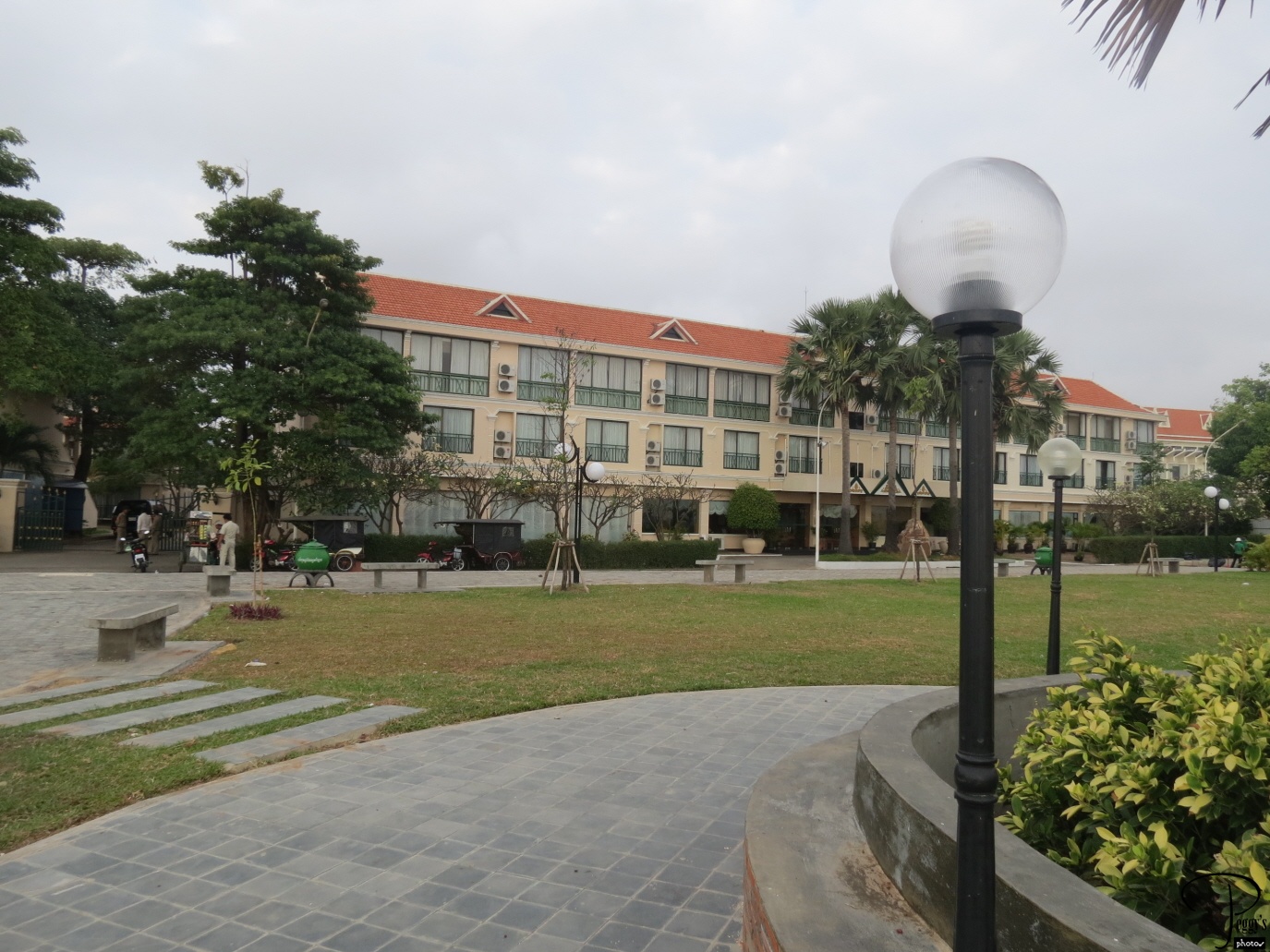
I came into Phnom Penh two days before my Gate 1 tour of Cambodia and Vietnam was to begin and I was staying at the hotel from which the tour was beginning, the Imperial Garden Villa & Hotel, a 3 1/2 star. The hotel, on the Tonle Sap River and with a pool and a restaurant, was very nice and was located in a nice area.
I didn’t know if the water from the faucets were pure enough to brush my teeth using it, so I used bottled water to brush my teeth and only drank bottled water both in Cambodia and Vietnam.
The Gate 1 tour did not spend time in Phnom Penh, only using the city as a meeting place. I found three tours that I thought would be interesting so that I would be able to see the city.
Photo taken the next day.

Imperial Garden Villa & Hotel
Imperial Garden Villa & Hotel
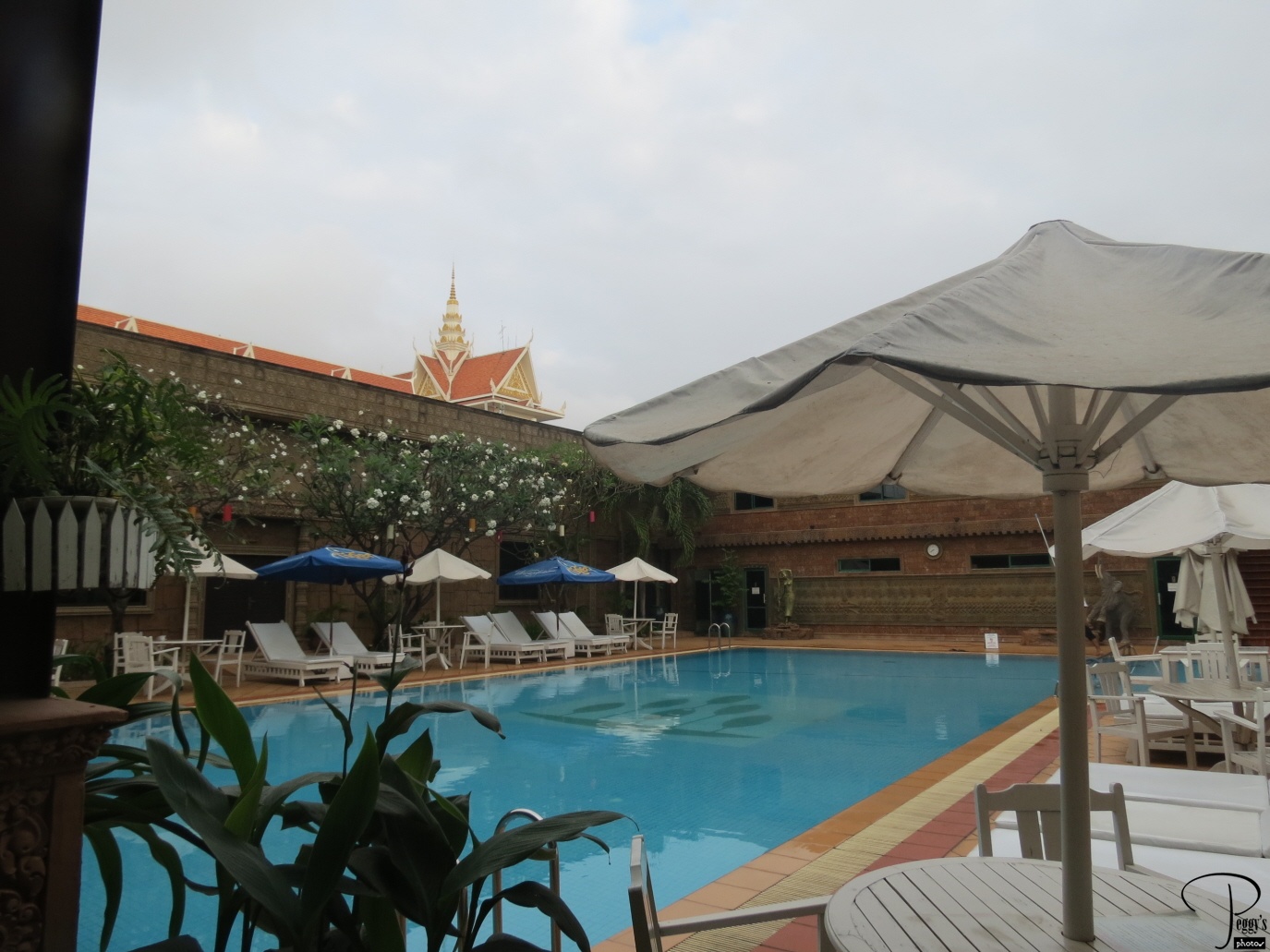
The hotel’s pool.

Imperial Garden Villa & Hotel
Imperial Garden Villa & Hotel
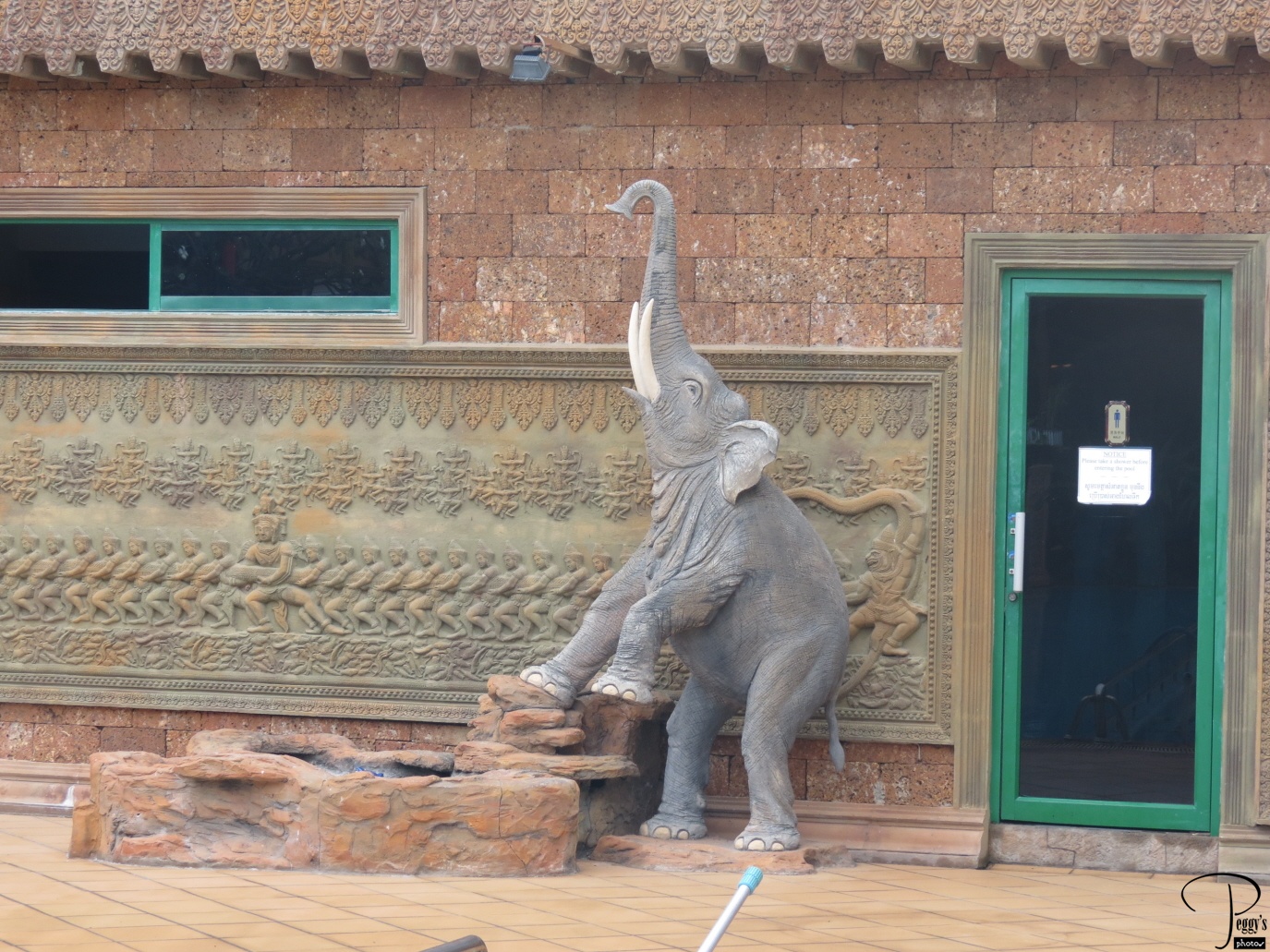
Elephant at the pool.

Imperial Garden Villa & Hotel
Imperial Garden Villa & Hotel
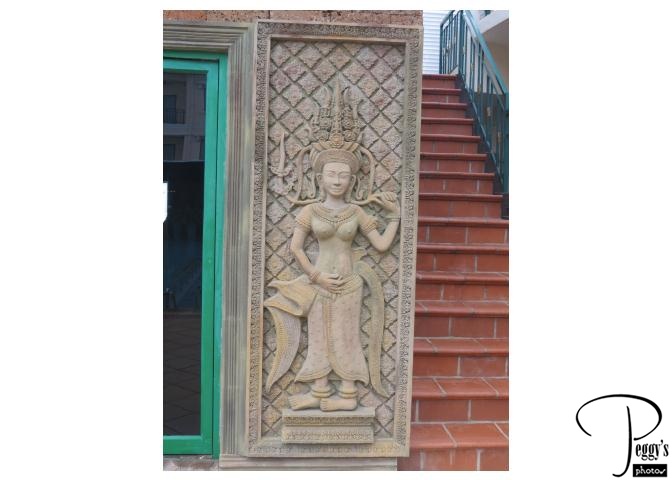
A bas relief on the wall.

Imperial Garden Villa & Hotel
Imperial Garden Villa & Hotel
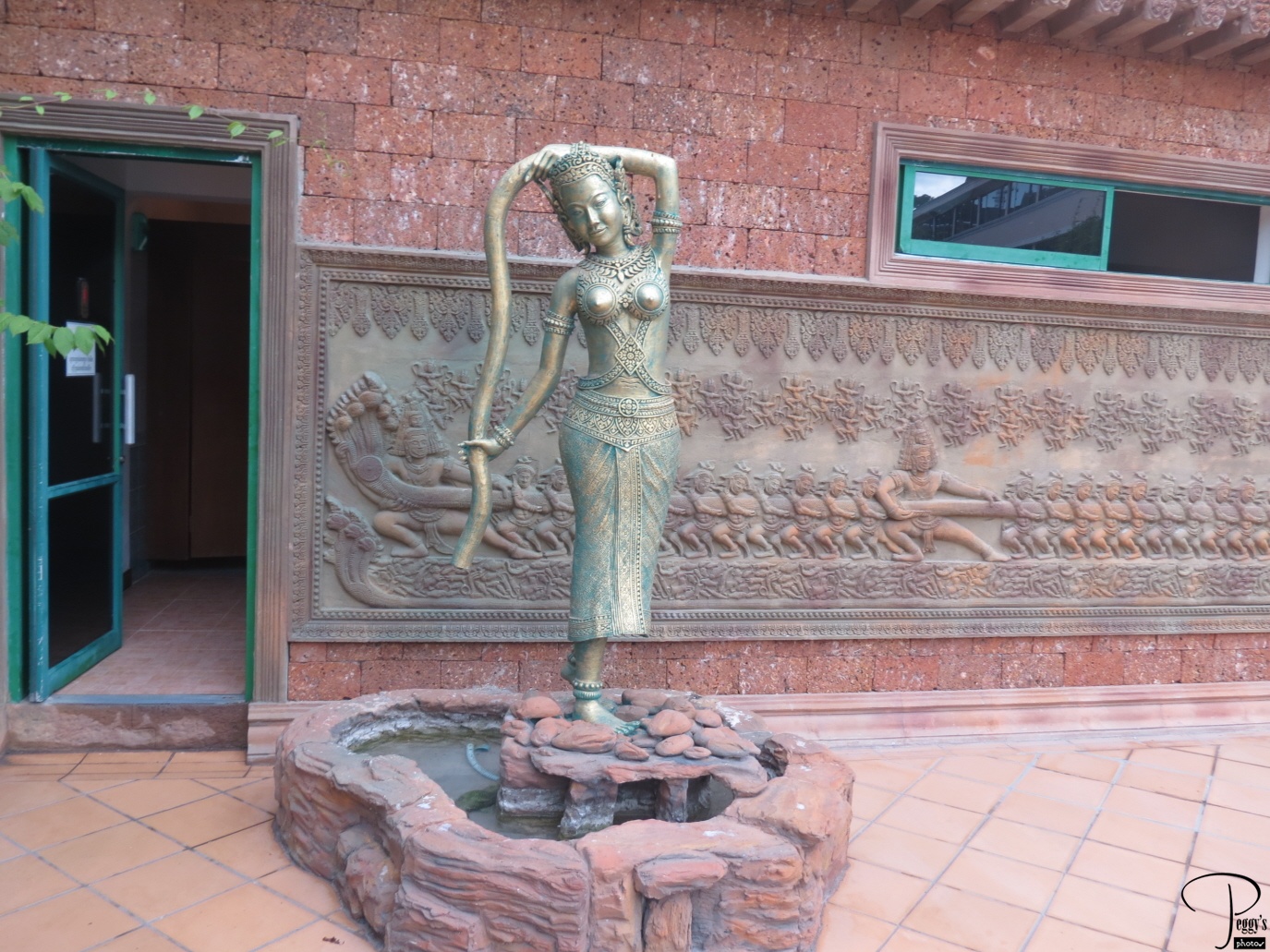
Statue at the pool.

Imperial Garden Villa & Hotel
Imperial Garden Villa & Hotel
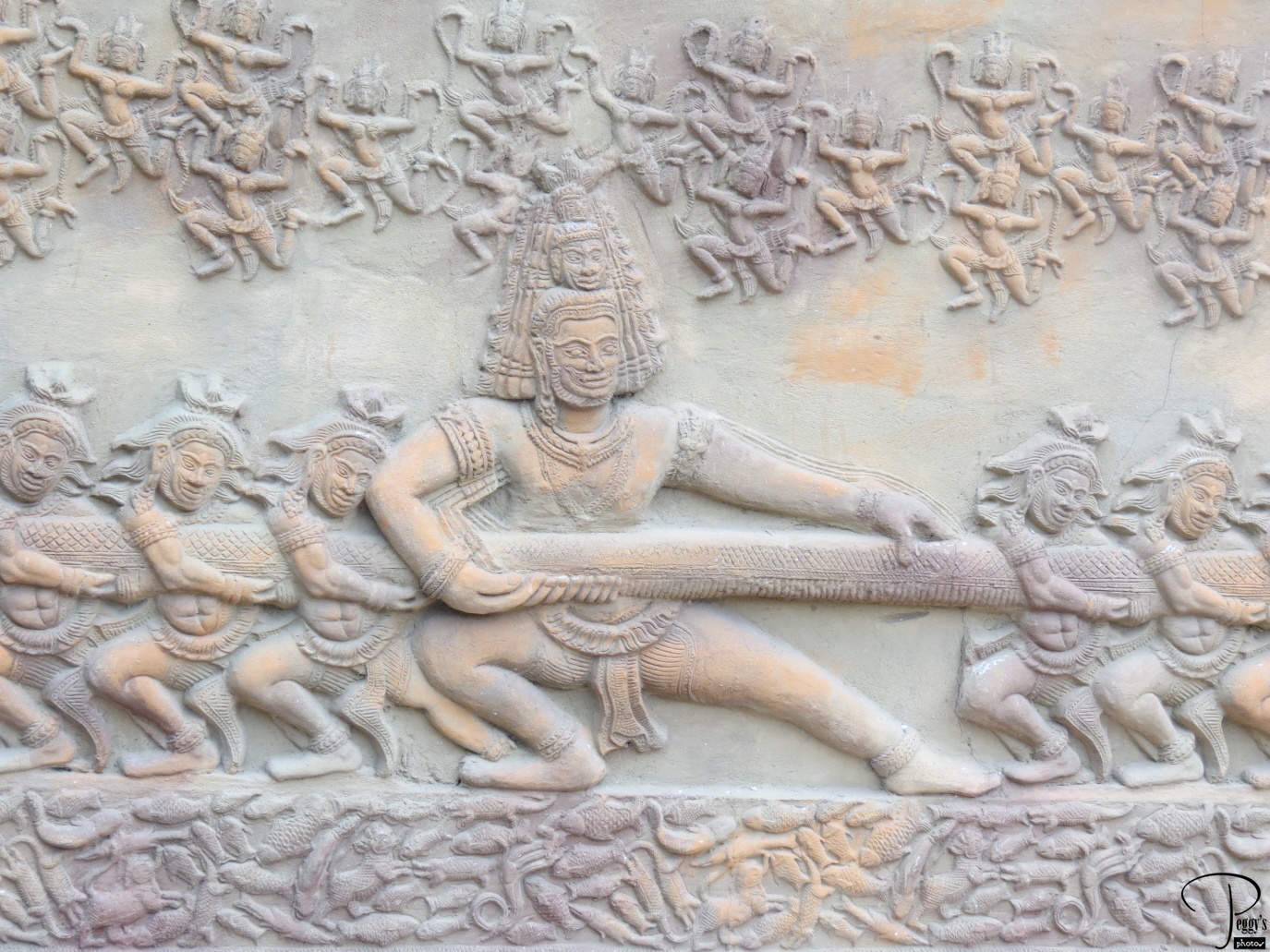
Close–up of bas relief on the wall.

Imperial Garden Villa & Hotel
Imperial Garden Villa & Hotel
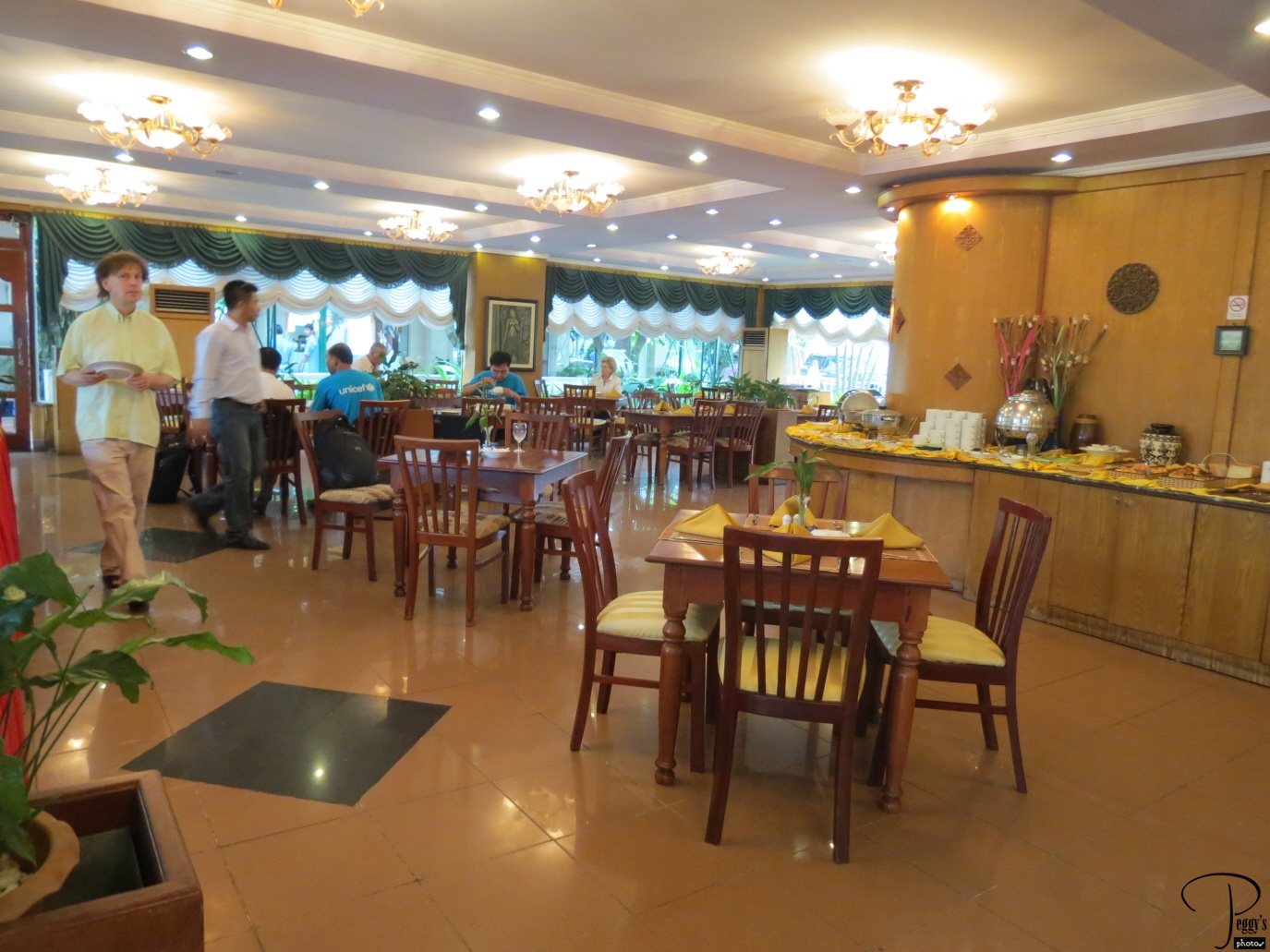
The dining room. You could also eat outside in front of the pool, which I did.

Imperial Garden Villa & Hotel
Imperial Garden Villa & Hotel
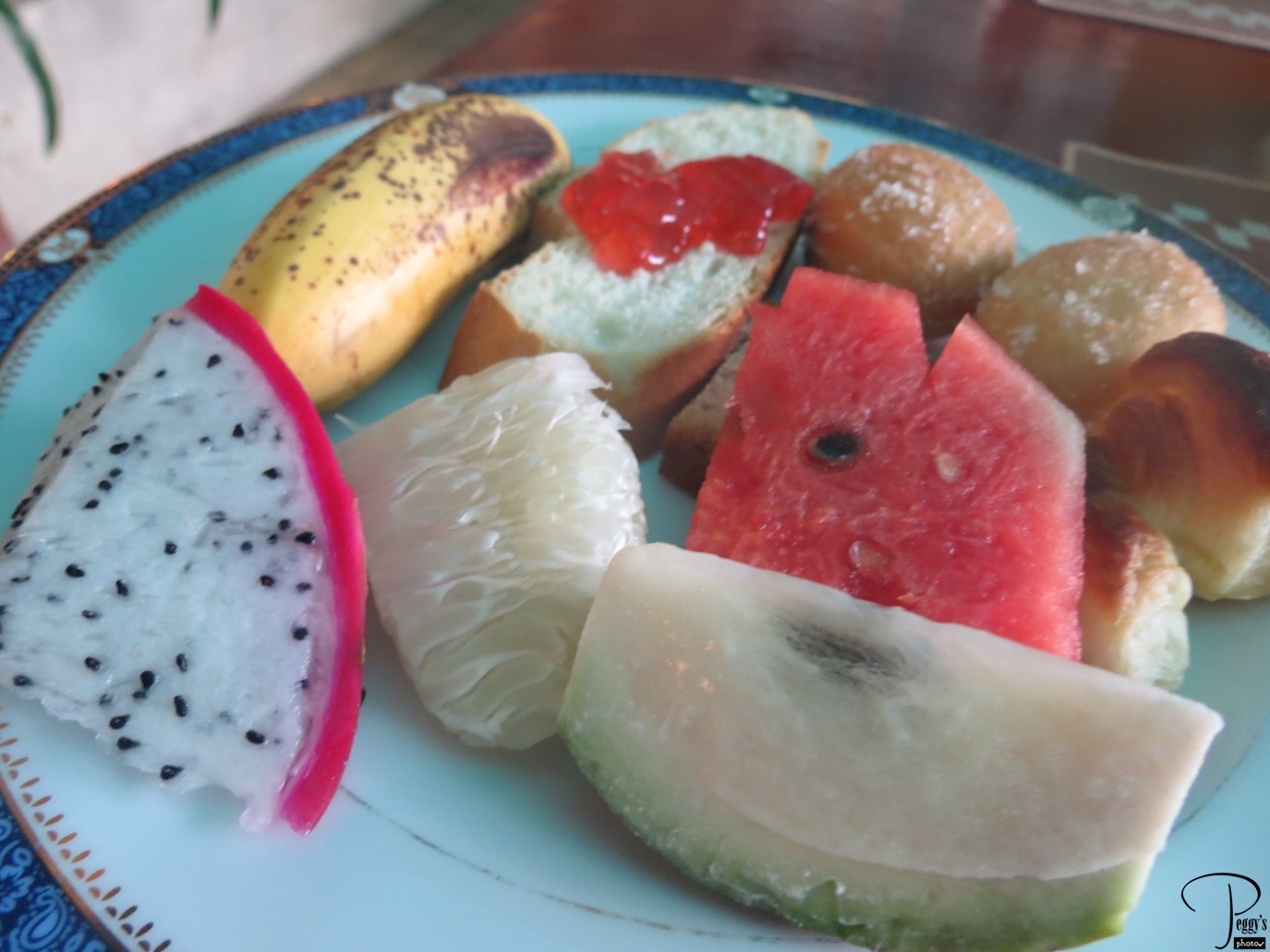
Day 2, a very good buffet breakfast was included, offering many types of delicious fruit. They grow very small bananas here which are just the right size to eat at one sitting. The fruit with the black spots and red outer covering is a dragon fruit. Coffee is very good in Cambodia.

Imperial Garden Villa & Hotel
Outside the Hotel
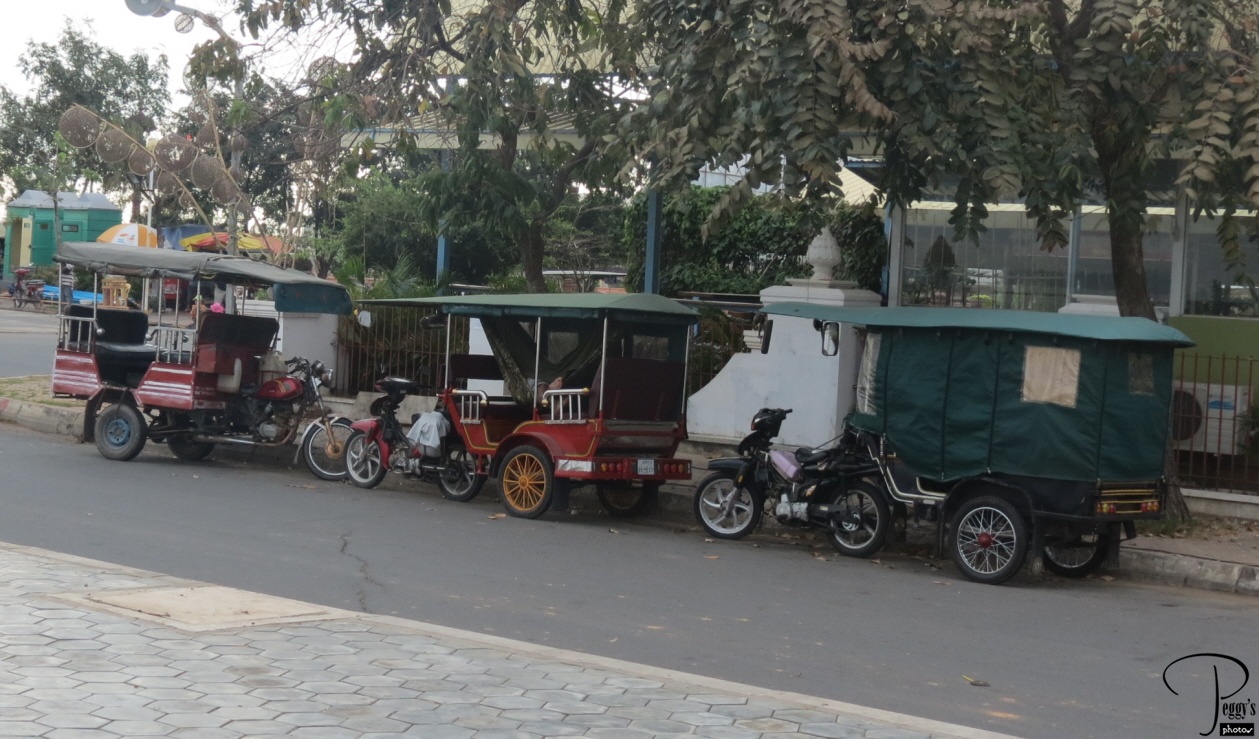
I had time before my tour guide was to pick me up and took a walk around the front of the hotel. Tuk–tuks, Phnom Pehn’s main taxis, are lined up. In Phnom Penh, you are more likely to ask at your hotel desk where is you can find a tuk–tuk rather than a regular taxi cab. The tuk–tuks will take you anywhere you want to go.

Outside the Hotel
Outside the Hotel
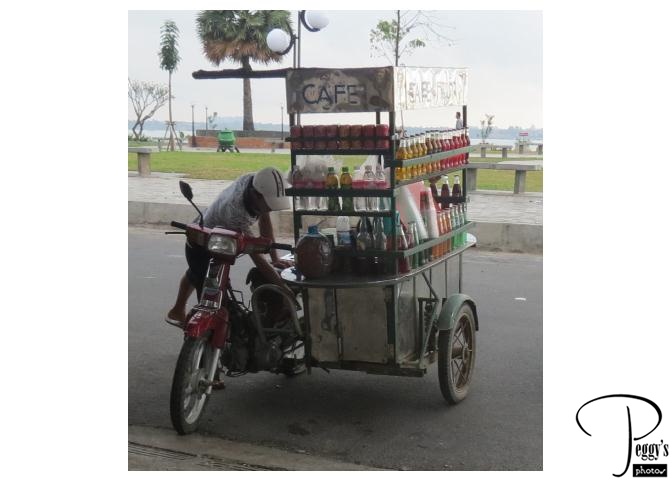
A motor scooter vendor. You see many such vendors in Phnom Penh.

Outside the Hotel
The Tonle Sap River
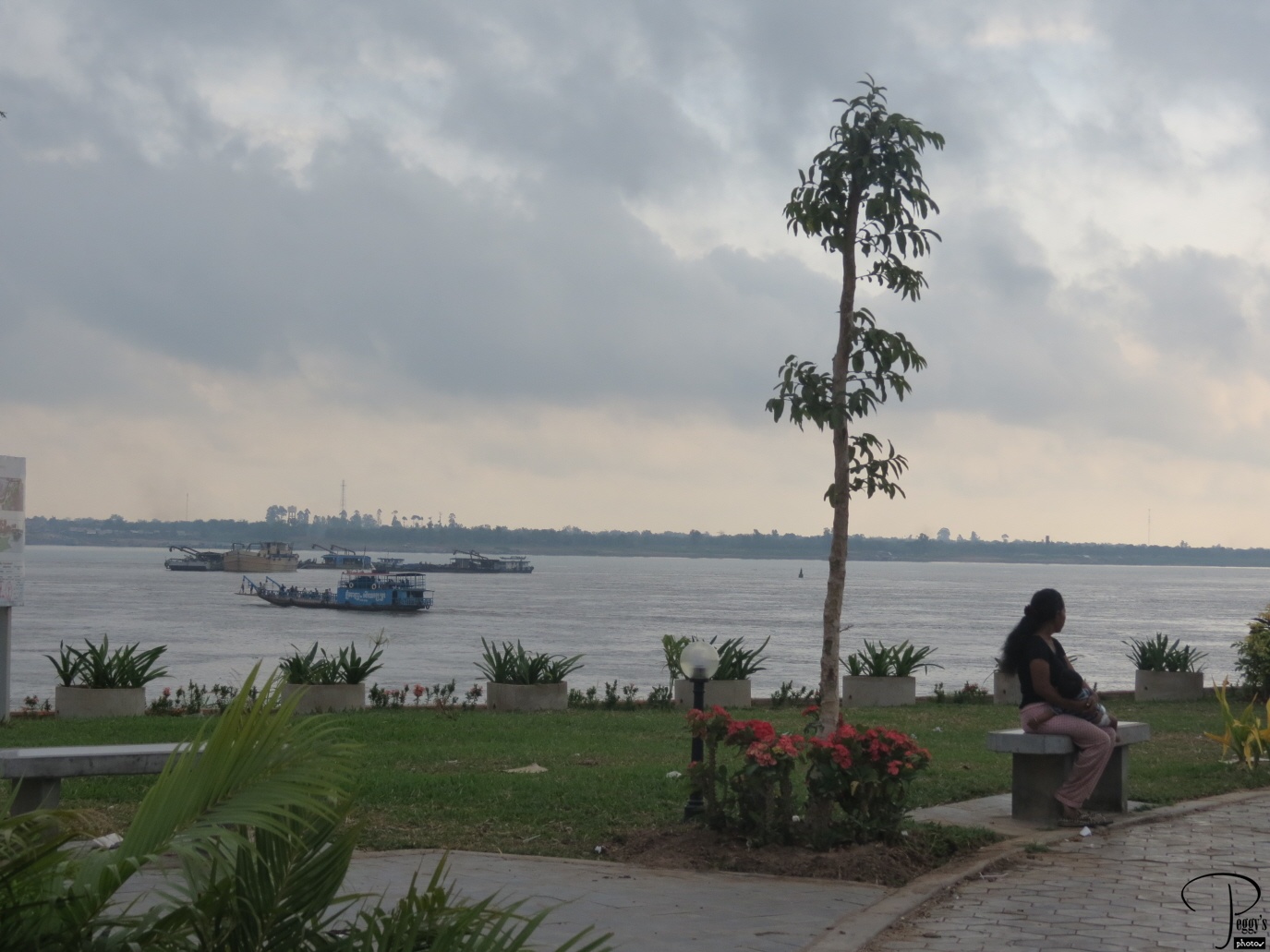
A view of the Tonle Sap River from in front of the hotel, which, during the dry season, flows into the Mekong River. The Mekong River is the longest river in Southeast Asia, the 7th longest in Asia, and the 12th longest in the world. Its 2,700–mile (4,350–km) route starts on the Tibetan Plateau in China and then travels through Myanmar, Laos, Thailand, Cambodia, and Vietnam.

The Tonle Sap River
In the Park in Front of the Hotel
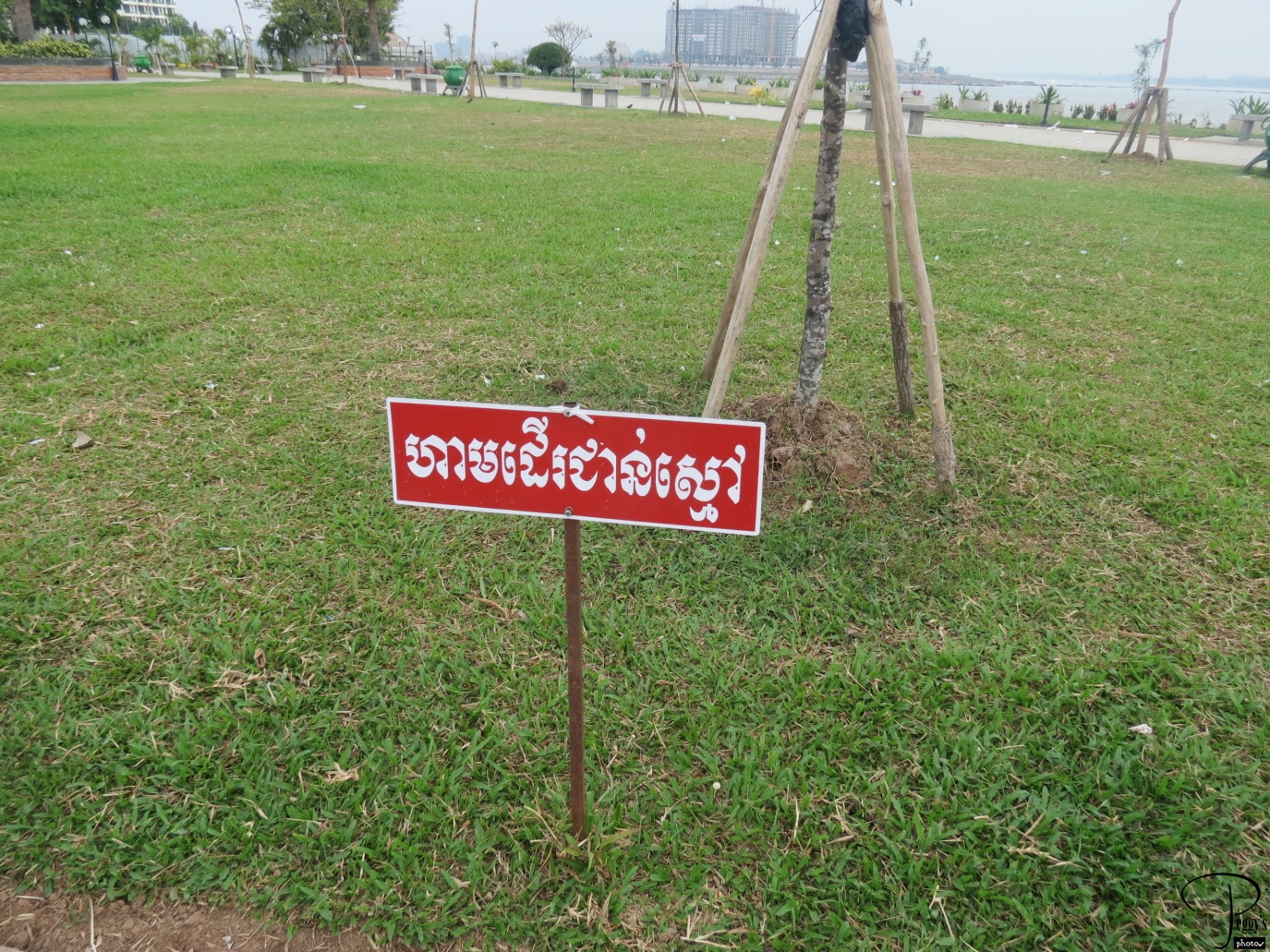
“Keep off the grass” in Cambodian?

In the Park in Front of the Hotel
Neighboring Hotel
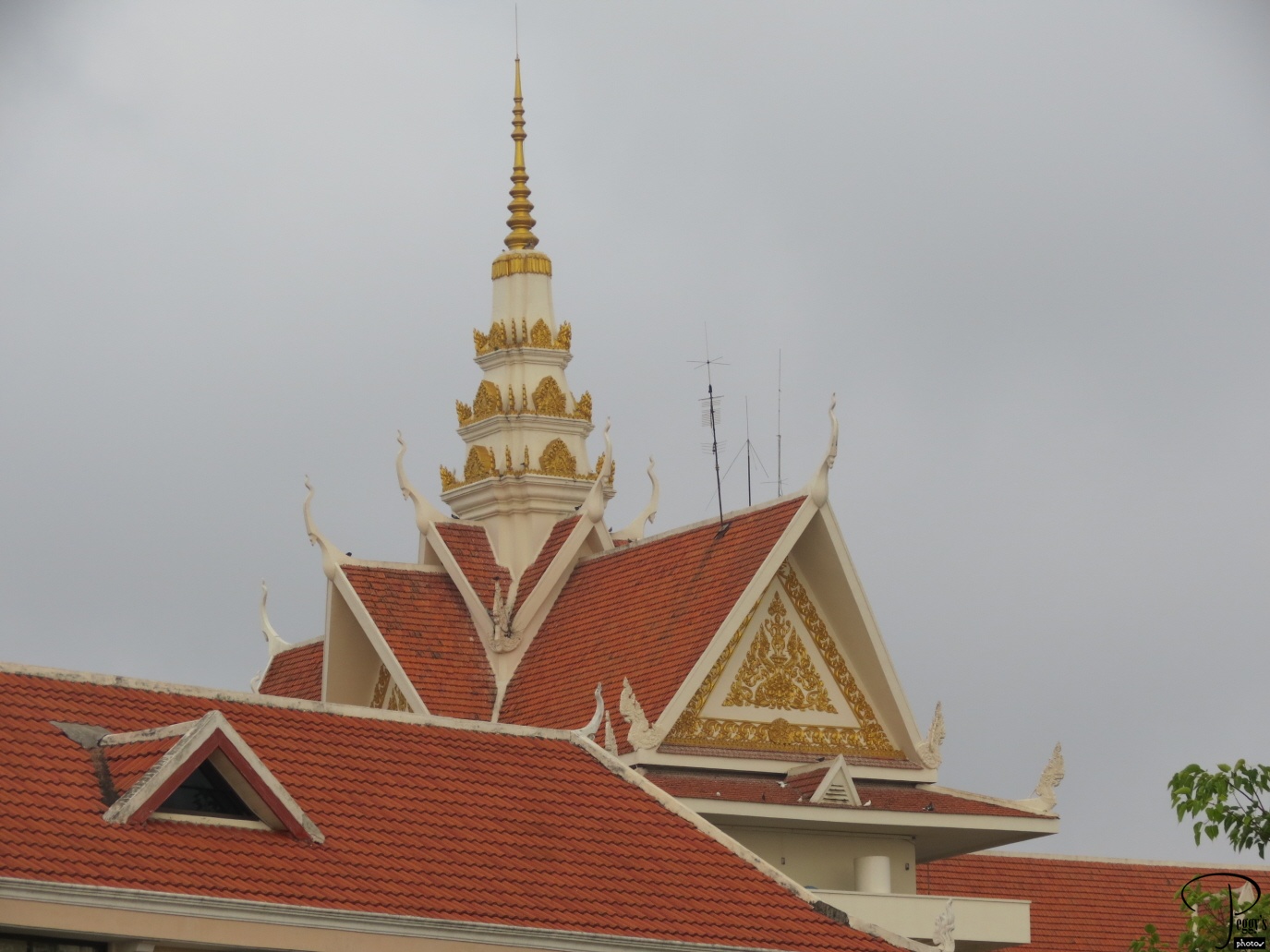
The roof of the hotel next door.

Neighboring Hotel
At the Hotel
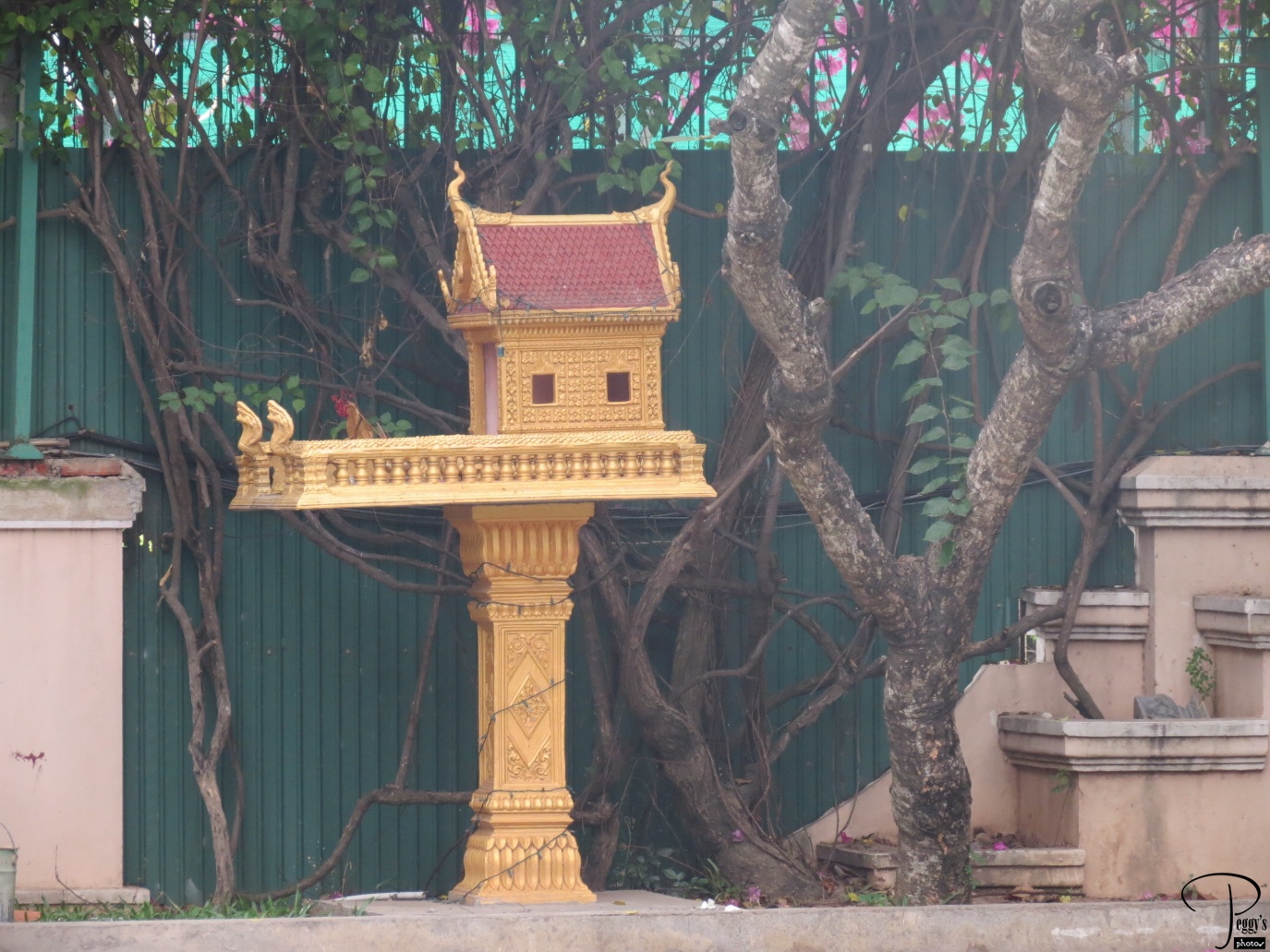
A Buddhist shrine in the hotel’s parking lot. (Okay, it did take me awhile to figure out that this wasn’t a very fancy bird nest. I had much to learn about Asia.)
Today was very hot––no cloud cover. It was so hot that my forehead rained.

At the Hotel
The Royal Palace
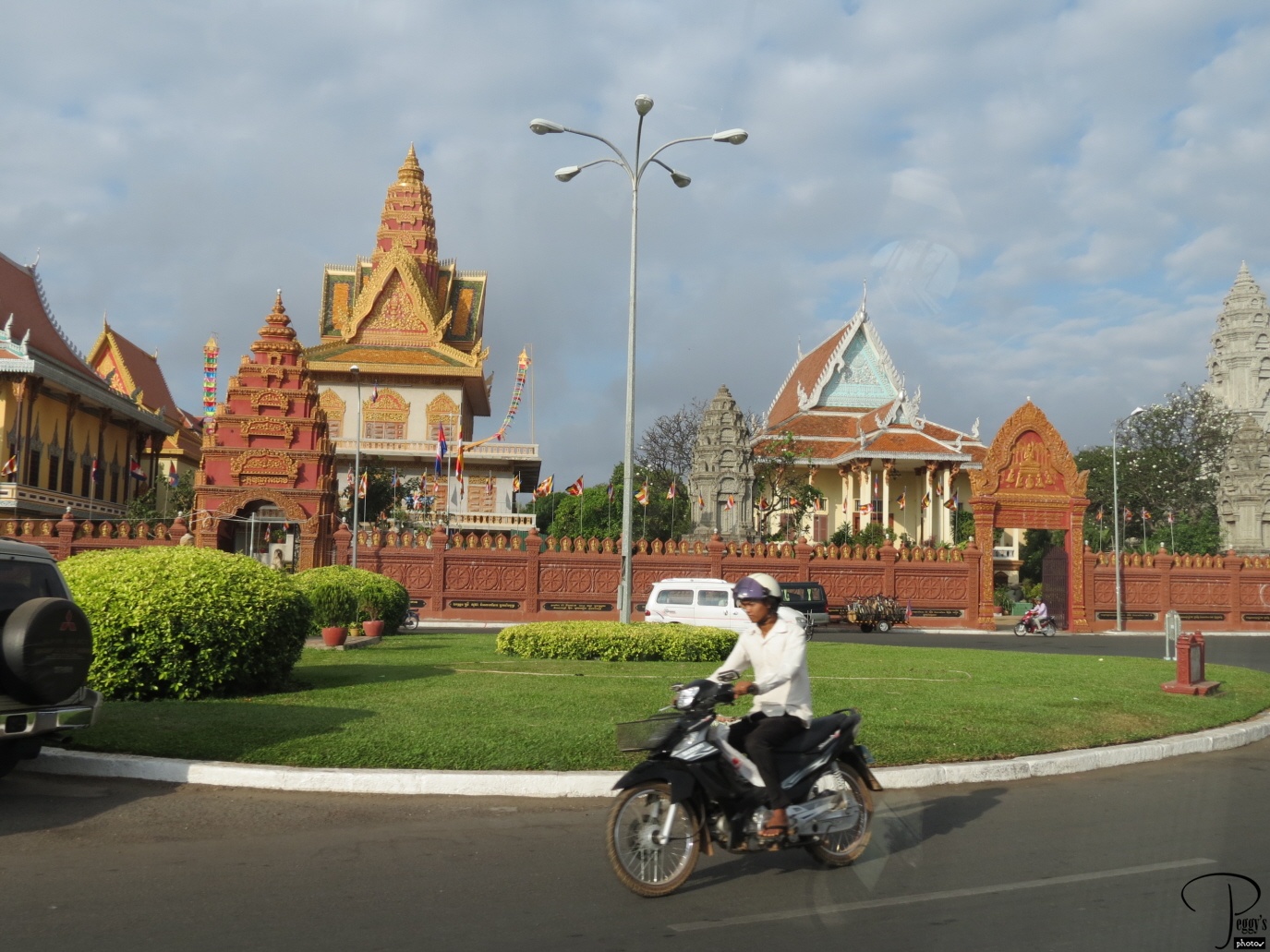
My tour guide came to pick me up in a van with a driver. He told me that I would be the only one on the tour this morning. Then he told me that I would be the only one on the tour this afternoon and also the only one on the all–day tour tomorrow. He would be my guide for all three tours. So I had my own personal tour guide for group tour prices––pretty good.
This morning’s tour was called “Phnom Penh’s Past,” with visits to the Tuol Sleng Genocide Museum and the Killing Fields. We passed the Royal Palace on the way to the Genocide Museum.
In 1863, the Kingdom of Cambodia became a protectorate of France in order to quell invasions from Vietnam and Thailand. After the Japanese occupation of Cambodia during World War II, France reimposed its protectorate. In 1953, France granted Cambodia independence and Norodom Sihanouk became king. He later abdicated to become the prime minister and his father became king. In 1969, the U.S. secretly bombed Cambodia because it was harboring North Vietnamese forces. Sihanouk was deposed and General Lon Noi assumed power and fought the North Vietnamese in Cambodia. In the meantime, the Cambodian Communist Khmer Rouge gained strength under Pol Pot and Pol Pot becomes head of state and unleashed four years of Cambodian genocide. Fighting broke out against Vietnam and Vietnam invaded Cambodia and took Phnom Penh in 1979, ending the Khmer Rouge regime and placing communists in power. In 1993, the monarchy was restored and Cambodia again became a kingdom. Its present king is Norodom Sihamoni.

The Royal Palace
Rice Fields

A bit out of the city, we passed rice fields on the side of the road. The house is built on stilts to keep the house from flooding when the water rises.

Rice Fields
On the Road
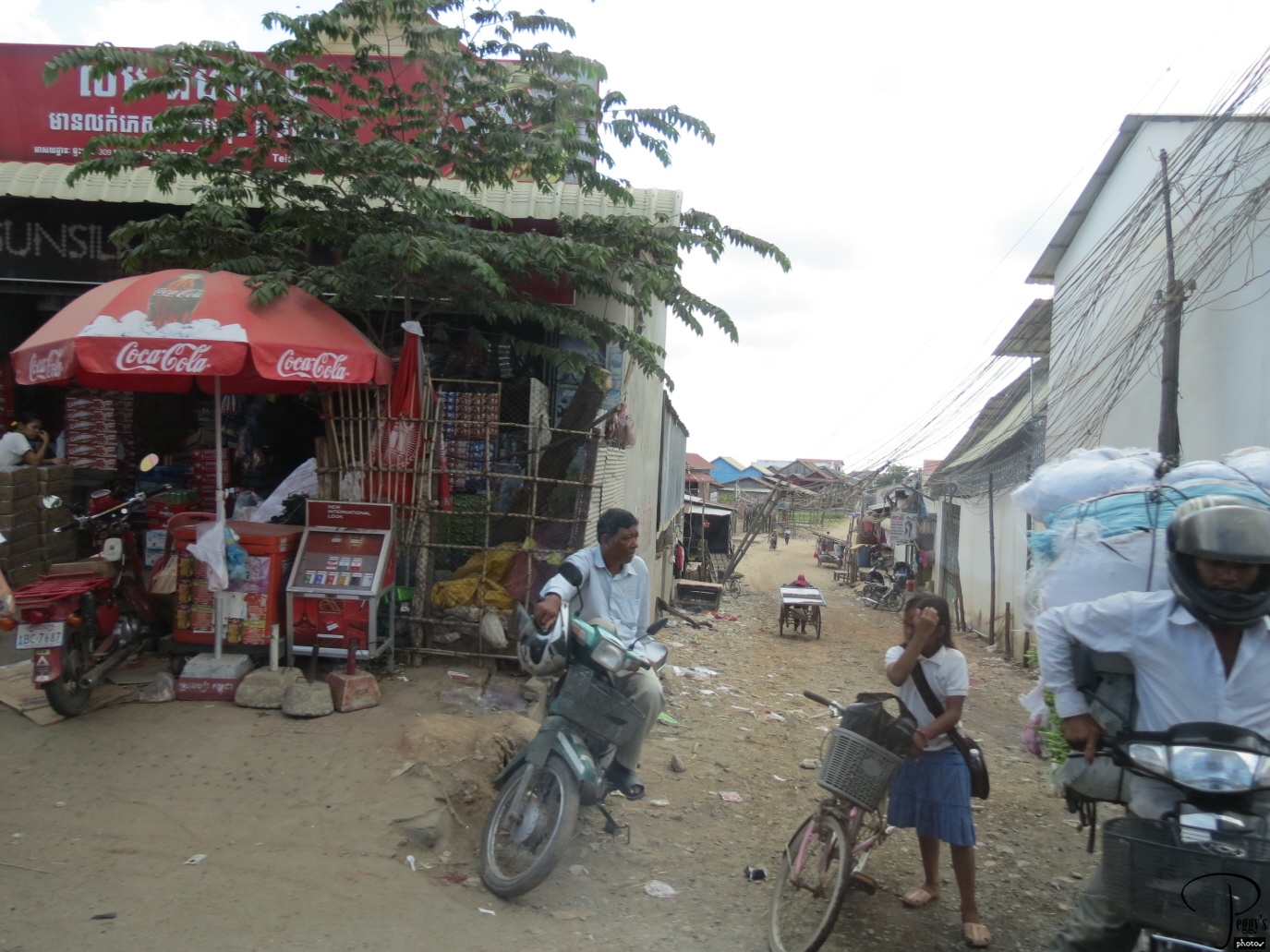
We also passed many Third World scenes. Cambodia also has a very big problem picking up trash. You see trash along the road throughout Cambodia.
I put my photos of what we passed on the road to the Tuol Sleng Genocide Museum, from the museum to the Killing Fields, and from the Killing Fields back to my hotel on a slide show: Go to Slide Shows, Asia, Cambodia, “Phnom Penh: On the Road, Day 2(A)” or go directly to
http://www.peggysphotos.com/phnom–penh–on–the–road–day–2a/

On the Road
The Tuol Sleng Genocide Museum
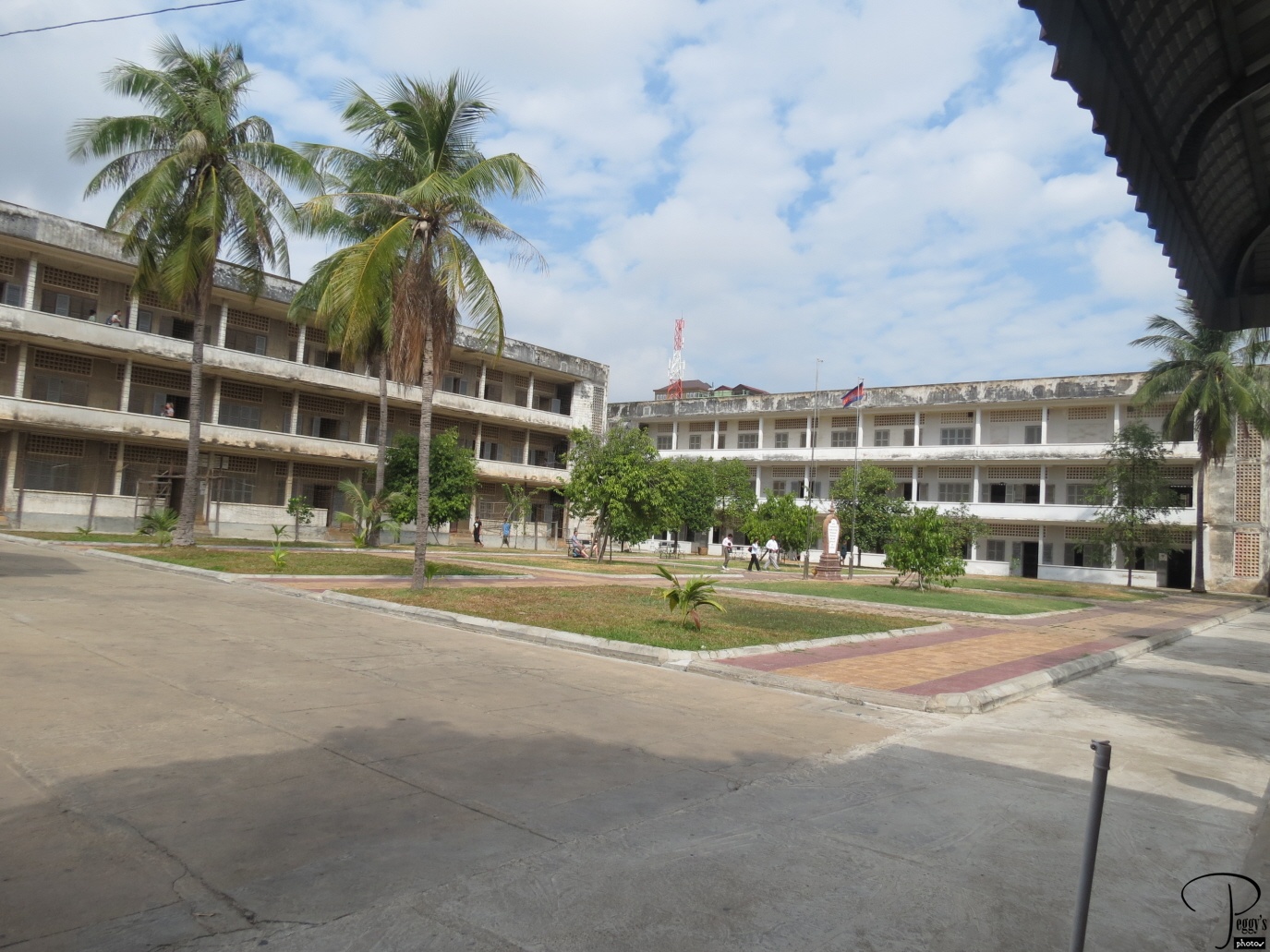
The Tuol Sleng Genocide Museum is at the Tuol Sleng Prison, known as Security Prison 21 (S–21). It was converted from a high school and used by the Khmer Rouge Communist regime under Pol Pot from 1975 to 1979. Prisoners were brought here to be tortured until they signed confessions of the crimes they were accused of.

The Tuol Sleng Genocide Museum
The Security of Regulation
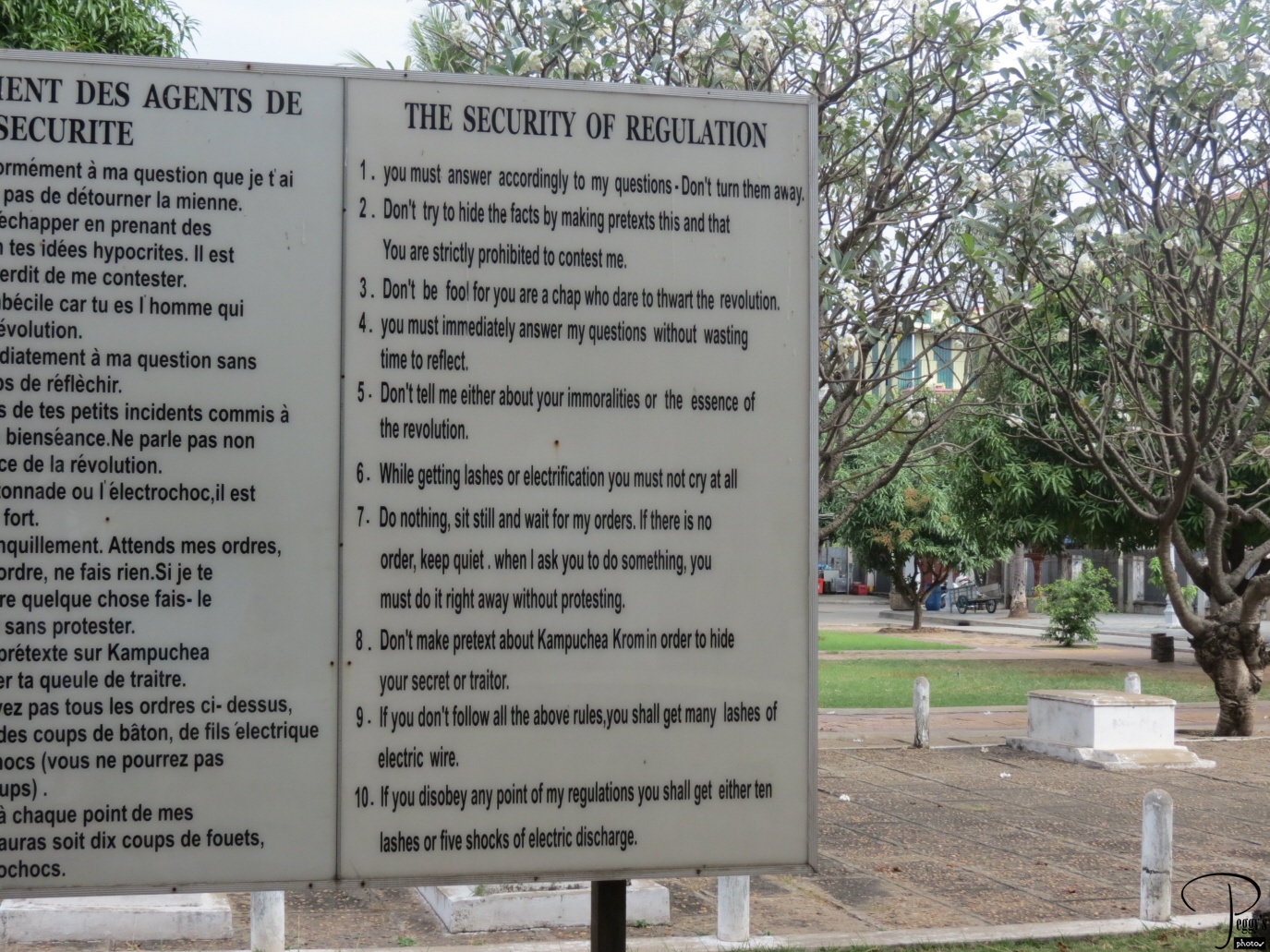
After the prisoners were brought to the prison, they were made aware of the 10 rules they must follow during their incarceration:
- 1. You must answer accordingly to my question. Don’t turn them away.
- 2. Don’t try to hide the facts by making pretexts this and that, you are strictly prohibited to contest me.
- 3. Don’t be a fool for you are a chap who dare to thwart the revolution.
- 4. You must immediately answer my questions without wasting time to reflect.
- 5. Don’t tell me either about your immoralities or the essence of the revolution.
- 6. While getting lashes or electrification you must not cry at all.
- 7. Do nothing, sit still and wait for my orders. If there is no order, keep quiet. When I ask you to do something, you must do it right away without protesting.
- 8. Don’t make pretext about Kampuchea Krom in order to hide your secret or traitor.
- 9. If you don’t follow all the above rules, you shall get many lashes of electric wire.
- 10. If you disobey any point of my regulations you shall get either ten lashes or five shocks of electric discharge.

The Security of Regulation
The Killing Fields, the Choueng Ek Memorial
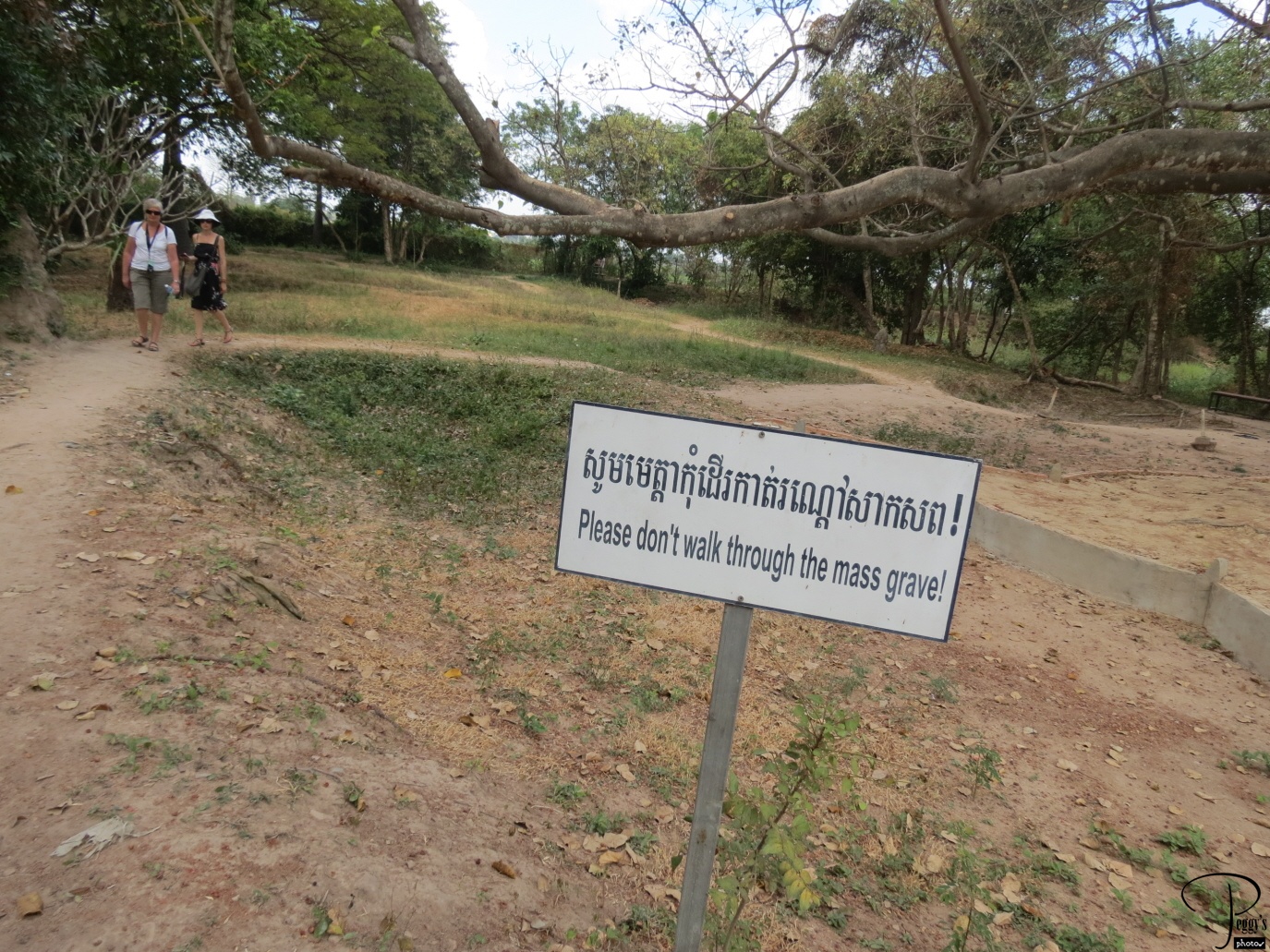
After seeing the Tuol Sleng Genocide Museum, we went to the Choueng Ek Memorial at the Killing Fields. After the prisoners were tortured and confessed, they were taken to the Killing Fields to be killed.
I have put my photos of the Genocide Museum and the Killing Fields on a slide show. However, it is quite graphic and you may not choose to view it. If you do, go to Slide Shows, Asia, Cambodia, “Tuol Sleng Genocide Museum/The Killing Fields, Day 2(B)” or directly to
http://www.peggysphotos.com/tuol–sleng–genocide–museumthe–killing–fields–day–2b/
This was a very depressing tour to take.
Cambodia has not recovered from its history. It is the poorest nation in Southeast Asia. During the Pol Pot genocide, it lost 1/4 of its population, including most of its educated citizens. Today, its educational system is poor and its health care is poor. It is a Third World country but not one without many attractions, especially for someone like me who loves to take photos. We also found the Cambodians to be very friendly people, always giving us smiles and we felt very welcome in their country.
